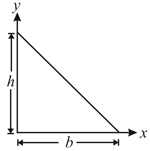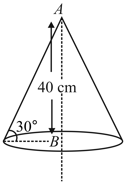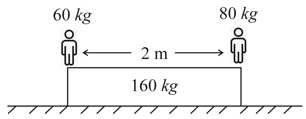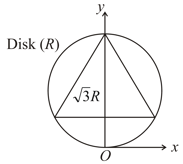Embibe Experts Solutions for Chapter: Rotational Motion, Exercise 1: Exercise 1
Embibe Experts Physics Solutions for Exercise - Embibe Experts Solutions for Chapter: Rotational Motion, Exercise 1: Exercise 1
Attempt the practice questions on Chapter 5: Rotational Motion, Exercise 1: Exercise 1 with hints and solutions to strengthen your understanding. Physics Crash Course JEE Advanced solutions are prepared by Experienced Embibe Experts.
Questions from Embibe Experts Solutions for Chapter: Rotational Motion, Exercise 1: Exercise 1 with Hints & Solutions
The centre of mass of triangle shown in figure has coordinates

A uniform solid cone of height is shown in the figure. The distance of the centre of mass of the cone from point (centre of the base) is:

A uniform disc of radius had initial angular velocity and then gently placed on a rough horizontal surface at time , with its plane horizontal. The friction coefficient between the disc and the horizontal surface is . Then
A ring of mass and radius is placed on a rough horizontal surface (co-efficient of friction ) with velocity of C.M. and angular speed as shown in figure. Initially the ring is rolling with slipping but attains pure rolling motion after some time . Then

Two men of masses and are at the two ends of a slab of mass as shown in figure. The horizontal surface is smooth. If the men interchange their positions on the slab, then displacement (in ) of the slab is approximately (closest integer)

From a uniform disk of radius , an equilateral triangle of side is removed. The position of centre of mass now is , then value of is ____ unit. (Given units)

A uniform bar with mass lies symmetrically across two rapidly rotating fixed rollers, and $B$ with distance '' between the bars centre of mass and each roller. The rollers whose direction of rotation are shown in figure slip against the bar with coefficient of friction . Suppose the bar is displaced horizontally by a small distance '' and then released, the time period of oscillation in sec is.

A cylinder of mass and radius lies on a plank of the same mass as shown in the figure. The surface between plank and ground is smooth but there is friction between cylinder and plank. If the coefficient of friction between the cylinder and the plank is , then what maximum initial compression (in ) can be given to the spring such that the cylinder moves without slipping with respect to the plank? [Given, ]

